I'm looking for a little help with regards to the logic required for a project I'm looking at undertaking soon.
I am looking at creating a 'quickshifter' for my motorbike. The way this will work is by breaking the ignition circuit(signified as M1 motor) momentarily using a 'normally closed' relay(RY1).
The problem I am facing is that the circuit will stay broken for as long as the switch (s1) is pressed. I am looking for a solution that will only leave RY1 open for a specific amount of time, in the 50-100ms range.
I would like the circuit to be broken for a maximum of 50-100ms; this is regardless of how long the button is held down. So for example. If I press and hold the button/switch, the relay will be trigged within the first 50-100ms, but not again until the switch/button is de-pressed and re-pressed.
What logic could be used in order to achieve this? Apologies for my incredibly crude diagram.

EDIT - I have tried to create a monostable 555 circuit as suggested, but I think I am missing something.

When I view data recorded when I run the circuit, I see some erratic current readings at Imeter1; and VMeter1 shows the voltage droping from 12v to 0v when the switch is activated.. nothing gets recorded across any other the other meter(IMeter0). Can anyone tell me what I've missed? Am I being an idiot?
